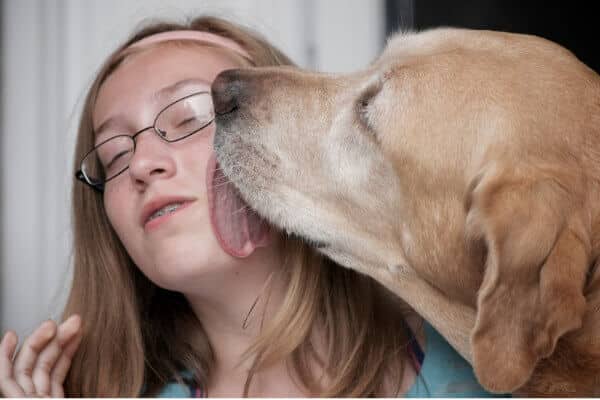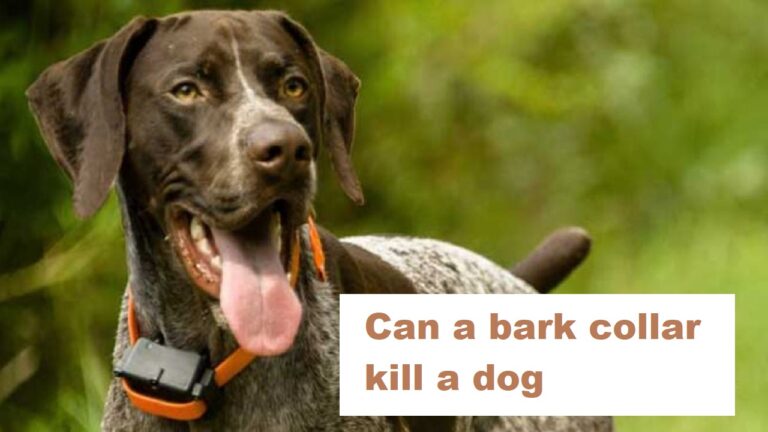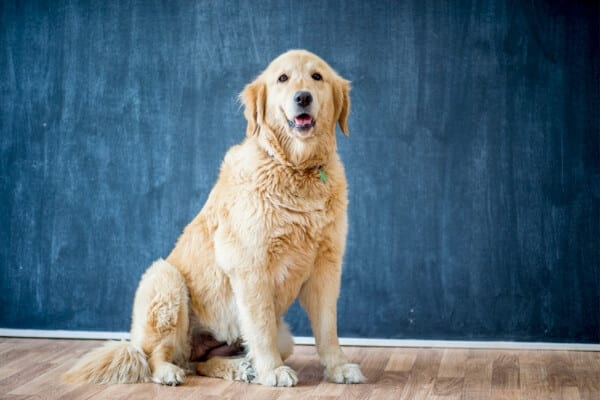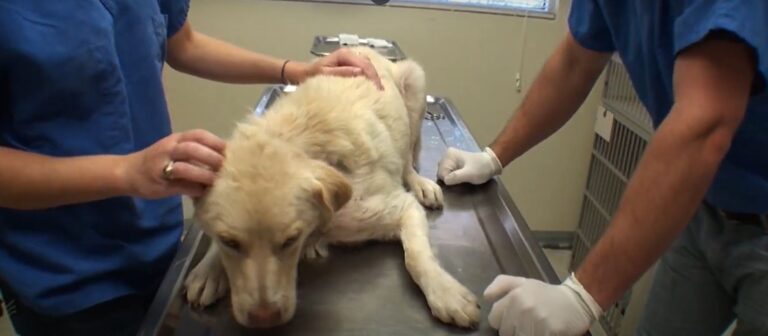My Dog Licked My Face And Now I Have Bumps Or Rashes

Pets are often considered members of the family, sharing our homes, our lives, and in some cases, even our faces. There’s no denying the joy of an enthusiastic welcome from a furry friend, coupled with a wagging tail and licks to the face. But what happens when these expressions of affection leave more than just a wet patch? What causes the unexpected and uncomfortable skin reaction on your face after being licked by a dog?
The most likely cause is an allergic reaction, more specifically to your dog’s saliva. While allergies to dog hair and dander are well-known, it’s also possible to be allergic to the proteins in a dog’s saliva, which can lead to skin reactions characterized by bumps, rashes, redness, or itchiness. This reaction could occur immediately after your dog licks your face or could develop over a few hours.
A study suggests that dog saliva has a greater potential to trigger an allergic reaction than dander due to the abundance of IgE protein found in it.
As we delve deeper into this topic, we’ll explore the potential causes, diagnosis, and treatment options for skin reactions from dog saliva and effective strategies to discourage your dog face licking.
Jump to Section
Is it unhygienic to let a dog lick your face?
The question of whether it’s unhygienic to let a dog lick your face is one that often divides pet owners. While some relish the slobbery kisses, others are less enthusiastic about the potential infection. While most of the microbes in a dog’s mouth won’t harm a healthy human, there is a considerable risk of bacterial or parasitic infection that needs to be acknowledged.
Among the bacteria found in dogs’ mouths are Escherichia coli (E. coli), Clostridium, Campylobacter, and Salmonella, all of which can cause gastrointestinal illnesses in humans. Dogs also carry Capnocytophaga canimorsus, a bacteria that can cause serious infections in humans, although this is relatively rare.
Dogs can also carry various types of parasites, such as ticks and fleas, which can jump onto humans when the dog gets up close to lick their face. These parasites can carry diseases like Lyme disease and Bartonella, which can cause serious health problems in humans.
Another troubling concern is that dogs can carry allergens on their saliva or dander which they can spread to humans when they lick their faces. This can trigger allergic reactions in people who are sensitive to these allergens.
Furthermore, if a dog has a disease such as kennel cough or canine influenza, they can potentially spread it to humans when they lick their faces. Although it’s rare for dogs to spread these diseases to humans, it can happen, especially in people with weakened immune systems.
Why Do I Have Bumps Or Rashes After My Dog Licked My Face?
When you have bumps or rashes after your dog licks your face, it most likely indicates an allergic reaction. An allergy is essentially your immune system overreacting to substances that it mistakenly identifies as harmful. While allergies to dog dander (skin flakes) and urine are common, you can also be allergic to proteins found in your dog’s saliva. This can result in a range of symptoms, including redness, itching, swelling, and the formation of bumps or hives.
The allergens in dog saliva are proteins that, to most people, are entirely harmless. However, in individuals with allergies, the immune system mistakenly perceives these proteins as foreign substances. It then releases histamines, chemicals designed to protect the body. While histamines are useful in defending against harmful pathogens, their release in response to harmless substances results in allergic symptoms. In this case, the histamines cause inflammation in the skin, leading to bumps or rashes.
More often than not, allergens from dogs are not limited to direct contact with the animal itself. They can be encountered through touching or interacting with objects and surfaces that the dog has come into contact with. These may include commonplace items and areas such as beds, sofas, floors, clothes, or even dog toys.
Dogs can carry some ringworm on their skin and they often use their mouth to lick the itchy spot on their skin. Hence, you can get infected by any form of contact with the dog, be it touching or licking. Ringworm is characterized by a ring-shaped rash. There is also a risk of catching varieties of bacteria that can cause bumps or rashes particularly if your skin barrier is breached. Ticks, fleas, and mites can also be transferred by contact with dogs.
How To Diagnose Dog Saliva Allergies
Identifying a dog saliva allergy requires a methodical approach, as symptoms can sometimes mirror those of other types of allergies or health conditions. If you suspect that you have an allergy to your dog’s saliva, the following are the usual steps taken for diagnosis:
1. Documenting Symptoms: The first step in diagnosing a dog saliva allergy is to carefully record the symptoms you experience after contact with your dog’s saliva. These could include skin reactions, such as redness, itchiness, or hives; respiratory symptoms, like sneezing, coughing, or wheezing; or eye-related symptoms, such as redness, itchiness, or watering. It’s crucial to note when these symptoms occur, their severity, and how long they last.
2. Medical History and Physical Examination: A healthcare professional will review your medical history and perform a physical examination. They may ask about your interactions with your dog, the timing and frequency of your symptoms, your living environment, and any other known allergies. They may also examine any skin reactions or other physical signs of an allergy.
3. Allergy Testing: Two primary types of allergy tests can be used to diagnose a dog saliva allergy:
- Skin Prick Test: In this test, a small amount of the dog saliva allergen is placed on your skin, typically on the forearm or back. Your skin is then lightly pricked with a small, sterile probe to allow the allergen to enter the skin. If you’re allergic, you’ll likely develop a raised bump or hive at the test site within 15 to 20 minutes.
- Blood Test: If a skin prick test isn’t suitable, for example, if you have severe eczema or are on certain medications, a blood test may be done instead. This test measures the amount of specific antibodies, called Immunoglobulin E (IgE) antibodies, that your body makes in response to dog allergens.
4. Elimination and Reintroduction: In some cases, you might be asked to avoid all contact with your dog for a while to see if your symptoms improve, and then reintroduce contact to see if symptoms reappear. While this can be challenging for dog owners, it can be a useful way to confirm a diagnosis.
As always, a healthcare professional should perform these tests and interpret the results. Self-diagnosing an allergy can be risky, as it may lead to unnecessary avoidance measures or treatments, or you might overlook a different condition causing your symptoms. Therefore, if you suspect you have a dog saliva allergy, it’s best to consult with a healthcare professional for accurate diagnosis and treatment.
Treatment Of Dog Saliva Allergies
If you’re diagnosed with an allergy to dog saliva, your healthcare professional will likely suggest a multi-faceted treatment or management approach tailored to your needs. This includes OTC medications, immunotherapy, preventing contact with the dog’s saliva, and maintenance of good hygiene.
1. Medication: Over-the-counter antihistamines can often alleviate mild to moderate allergy symptoms. Antihistamines work by blocking the effect of histamine, the substance in the body that triggers allergic reactions. Corticosteroids, available in forms like creams and nasal sprays, can also be used to reduce inflammation and other allergic symptoms.
2. Immunotherapy: In cases where symptoms are severe or don’t respond to other treatments, immunotherapy may be considered. This involves regular injections of a tiny amount of the allergen, in this case, the specific proteins in dog saliva, to help the immune system become less sensitive to it. Over time, this can reduce the severity of allergic reactions.
3. Prevention: The most effective way to prevent allergic reactions is to avoid the allergen altogether. In the case of dog saliva allergies, this could mean discouraging your dog from licking you, particularly on the face. While complete avoidance may be challenging, especially for dog owners, minimizing exposure can significantly reduce symptoms.
4. Maintenance of Good Hygiene: Washing hands and face immediately after a dog licking incident can help remove the allergen and reduce the risk of a reaction. Regularly cleaning areas where the dog spends time, such as their bed or toys, can also help reduce the concentration of allergens.
As always, before starting any treatment for dog saliva allergies, it’s important to consult with a healthcare professional who can provide personalized advice based on your medical history and current health status.
How To Stop Dog’s Face Licking
When your dog attempts to lick your face, try to redirect its attention to something else, such as a toy, a treat, or another activity. Over time, your dog will start to associate the redirection with its attempt to lick your face and gradually learn to suppress the urge.
Train your dog to understand a stop or “no licking” command. Begin by saying the command in a firm but gentle tone when your dog starts to lick your face, then reward the dog when it stops. The reward can be a small treat, pat, or verbal praise. Consistency is key here – make sure to use the same command and reward system each time.
If your dog attempts to lick your face, create a gentle physical barrier using your hand. Over time, this will condition your dog to understand that face licking is off-limits.
Teach your dog to respect personal space. This can be achieved through commands like “sit,” “stay,” or “back,” which instruct your dog to maintain a certain distance. Reinforce these commands with rewards to make them effective.
If you’re having trouble discouraging face licking, consider seeking help from a professional dog trainer or behaviorist. They can provide tailored strategies and tips based on your dog’s behavior and personality.
A bored dog might resort to licking as a way to get attention. Regular exercise and mental stimulation can help prevent this. Walks, playtime, puzzle toys, or obedience training can all keep your dog entertained and less likely to seek attention through licking.
Remember, patience and consistency are crucial when modifying a dog’s behavior. It can take time for a dog to unlearn a habit, especially one that’s ingrained as a form of communication or affection. Always use positive reinforcement methods and avoid scolding or punishment, which can confuse your dog and potentially harm your bond.
What happens if a dog licks your cut?
There’s a common belief that a dog’s saliva can have healing properties, leading to the adage, “Let a dog lick your wounds.” While dog saliva does contain certain enzymes that can help eliminate bacteria in their mouths, it isn’t sterile and isn’t beneficial for human wound healing. In fact, it can potentially cause complications.
Dogs’ mouths, like human mouths, harbor a multitude of bacteria, some of which can be harmful if introduced into an open wound. Bacteria such as Pasteurella, Streptococcus, or Staphylococcus, which are commonly found in a dog’s mouth, can cause infections if they come into contact with an open wound. Other zoonotic diseases like rabies, although rare, can be transmitted from dogs to humans through saliva. Rabies is often deadly if not treated promptly.
The physical action of a dog’s tongue can irritate and reopen the wound leading to a delay in the healing process. In essence, while a dog may possess some antimicrobial benefits, the potential risks outweigh any benefits it offers.
As discussed earlier, some people are allergic to proteins in a dog’s saliva and can have an allergic reaction if the saliva comes into contact with skin or cut.
If a dog licks your wound, it’s important to clean the area thoroughly with warm water and mild soap. Apply an over-the-counter antibiotic ointment, if available, and cover the wound with a clean bandage. Monitor the wound for signs of infection, which may include increased redness, swelling, pain, or pus discharge. If any of these symptoms occur, or if the wound is large, deep, or caused by a dog bite, seek medical attention promptly.
It’s always a good practice to discourage your dog from licking wounds. In your case, you can gently distract the dog or cover the wound. For the dog, consider a protective collar or bandage to prevent it from potentially causing self-harm. Remember, it’s essential to consult a veterinarian if your dog has a wound that’s causing concern.
my dog licked my lip now I have a bump
If your dog licked your lip and you now have a bump, it could potentially be an allergic reaction to the proteins found in your dog’s saliva. Some people can be sensitive to proteins in the saliva, causing the immune system to overreact. A bump on your lip could be a sign of a bacterial infection or irritation.
Wrap Up
Face licking is a common and natural behavior for dogs as they often use it to show affection. However, when this act causes bumps or rashes on your skin, it can be concerning. The primary cause for this is usually an allergic reaction to proteins present in your dog’s saliva. However, there are other potential causes as well, such as bacterial or fungi infections or parasitic infestations.
While it can be difficult to eliminate dog face licking completely, there are strategies you can employ to discourage this behavior. Additionally, maintaining good hygiene and minimizing your exposure to dog saliva can help to prevent skin reactions.
If you suspect you have an allergy to dog saliva, it’s best to consult with a healthcare professional for accurate diagnosis and treatment. Over-the-counter antihistamines can often alleviate mild to moderate allergy symptoms, while immunotherapy may be considered for severe cases. Remember, proper medical consultation is crucial before starting any treatment.
Finally, it’s important to note that while a dog’s saliva may harbor bacteria that can cause infections if introduced into an open wound, the risk of this occurring is generally low. However, if a dog licks your wound, it’s important to clean the area thoroughly and monitor it for signs of infection. Always discourage your dog from licking wounds to prevent potential health risks.
Read related posts about





